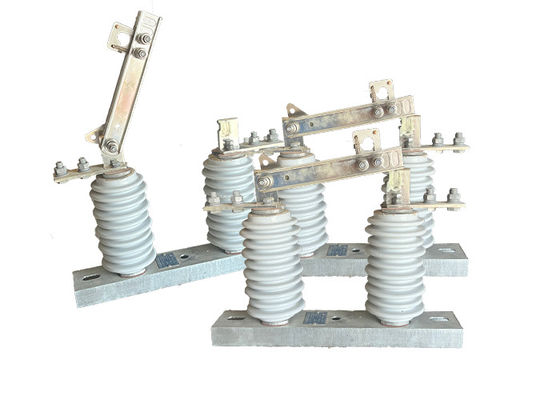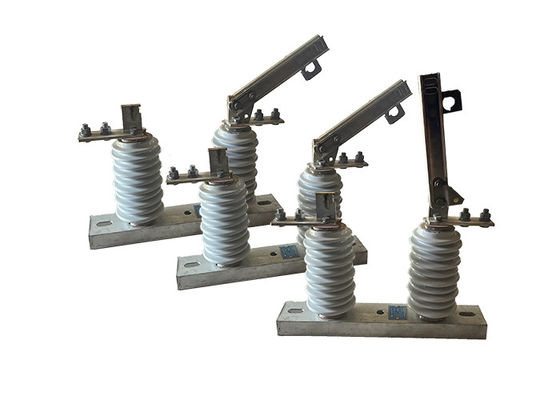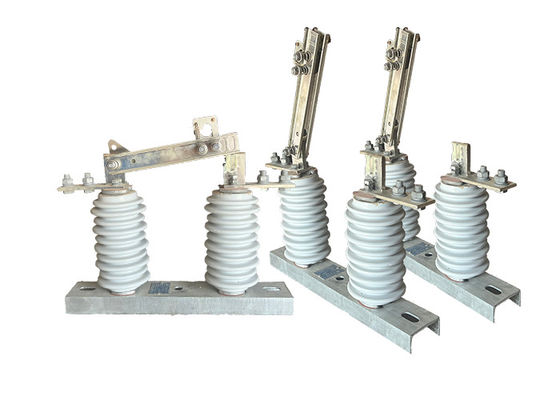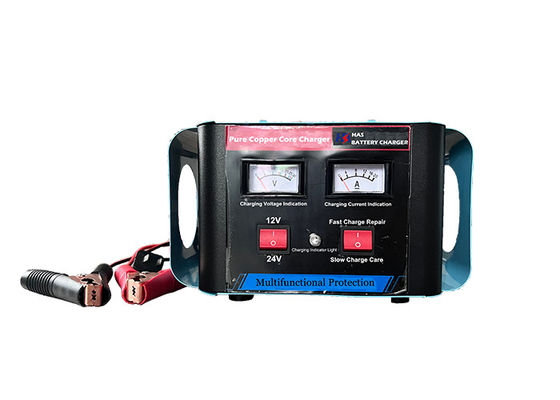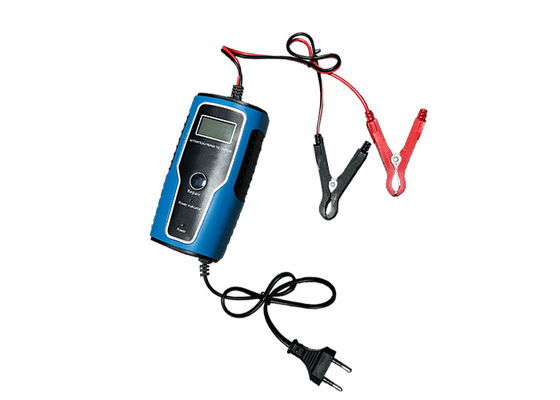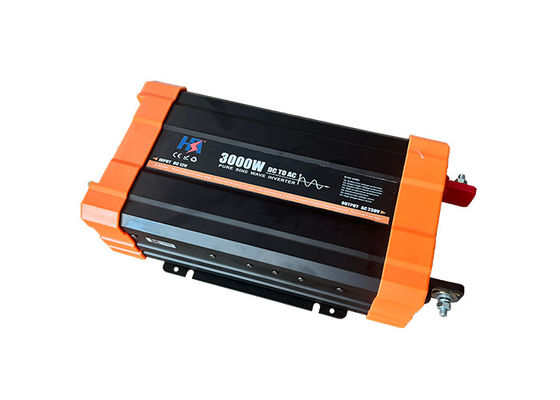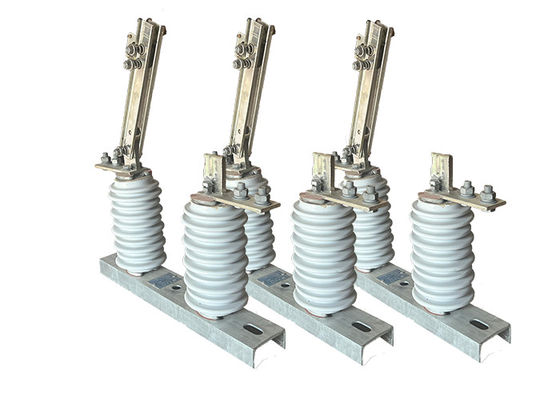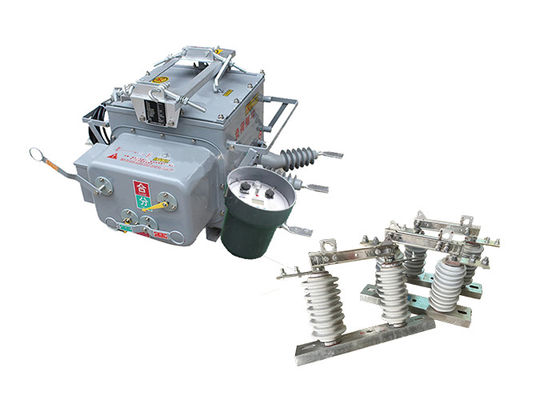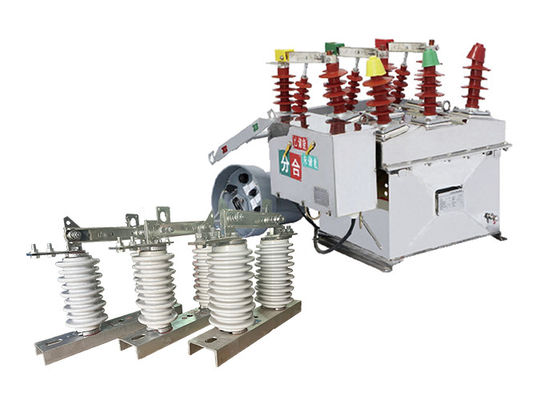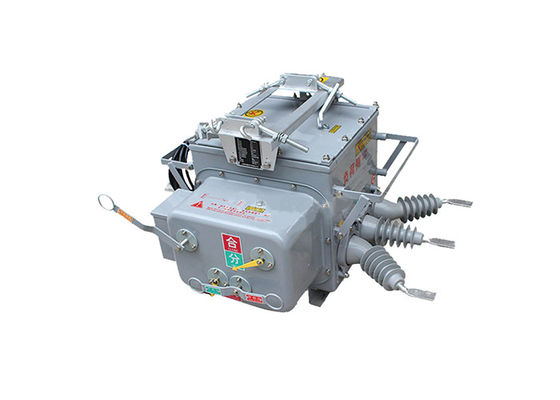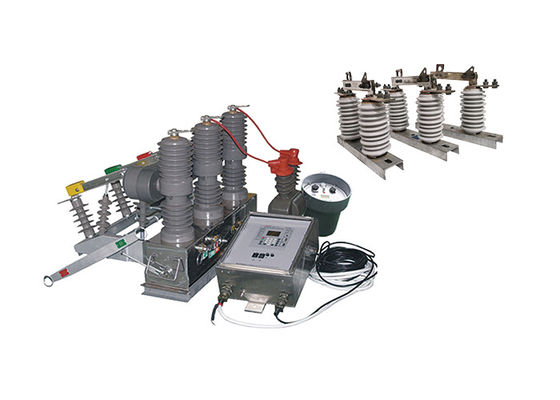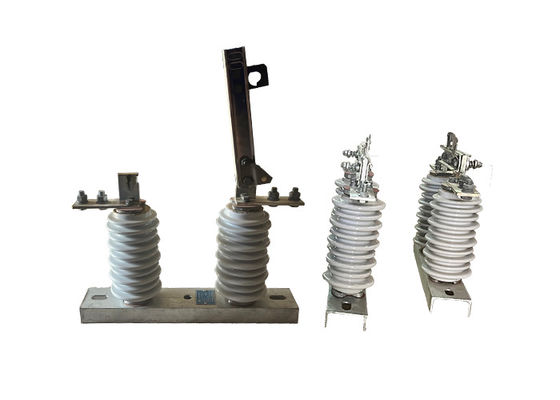Ceramic High Voltage Disconnect Switch 50Hz For Outdoor Distribution Easily Operated Powerful Vertical Break Switch
Product Description:
High voltage disconnect switch is a type of electrical switch used to isolate a section of an overhead power transmission line for maintenance or repair. It is typically used in high voltage electrical systems, such as those used by power utilities to transmit electricity over long distances.
The disconnector switch is mounted on an overhead structure, such as a transmission tower or pole, and is designed to withstand the harsh environmental conditions encountered in outdoor electrical systems. It features a vertical, or up-and-down, motion to engage or disengage the switch contacts, which are typically made of copper or other conductive materials.
The idisconnect switch is designed to provide a visible break in the transmission line, allowing maintenance personnel to safely work on the line without risk of electrocution or damage to equipment. It is often used in conjunction with other safety devices, such as grounding switches and surge arrestors, to protect the electrical system and the people working on it.
Overall, the high voltage disconnect switch is an important component of modern power transmission systems, ensuring reliable and safe operation of the electrical grid.
Application
High voltage disconnect switches are essential components in power transmission and distribution systems, as they allow for the isolation of specific sections of the network for maintenance or repair work. They can also be used to isolate sections of the network in the event of a fault or other abnormal condition.
These switches are designed to handle high voltages and currents, and are typically constructed from durable and robust materials such as stainless steel, aluminum or copper. They are designed to withstand harsh environmental conditions, such as extreme temperatures, high winds, and heavy rainfall.
There are several types of high voltage disconnect switches, including air-break switches, oil-immersed switches, and gas-insulated switches. Air-break switches are the most common type, and they wor k by using a set of contacts that physically separate when the switch is opened. Oil-immersed switches are typically used in high voltage applications and are filled with oil to prevent arcing when the switch is opened. Gas-insulated switches use sulfur hexafluoride gas to insulate the switch contacts, which allows for smaller and more compact switch designs.
High voltage disconnect switches must be operated and maintained by qualified personnel who have received proper training. Safety procedures must be followed when working with these switches, including the use of appropriate personal protective equipment and following lockout/tagout procedures to prevent accidental energization of the equipment. Regular maintenance and testing of high voltage disconnect switches is also important to ensure that they are functioning properly and are safe to use.
Safety Risks:
1.Switchgear Integration: High voltage isolator switches are commonly integrated into switchgear systems, which include other protective devices such as circuit breakers, fuses, and relays. This integration allows for comprehensive control and protection of the high voltage circuit, ensuring safe and efficient operation.
2.Remote Operation: Many high voltage isolator switches are equipped with remote operation capabilities, allowing them to be controlled from a centralized location. This feature enhances convenience and safety by eliminating the need for manual operation in potentially hazardous environments.
3.Arc Suppression: High voltage isolator switches are designed to suppress the formation and propagation of electrical arcs when opening or closing the switch. Arc suppression techniques, such as using arc chutes or arc extinguishing chambers, help minimize the risk of damage to the switch and surrounding equipment, as well as reduce the potential for electrical accidents.
4.Fault Detection: Some high voltage isolator switches are equipped with fault detection mechanisms that can sense abnormal conditions, such as excessive current or voltage, and trigger an automatic switch opening. This capability enhances the overall protection of the circuit by rapidly isolating the faulty section and preventing further damage.
5.Modularity and Scalability: High voltage isolator switches are often designed to be modular, allowing for easy installation, replacement, or expansion in the electrical system. This modularity enables flexibility and scalability, making it convenient to adapt the system to changing operational requirements.
Safety Tips:
1.Conduct routine testing and maintenance on the switch to ensure its proper functioning. This includes testing the switch's insulation resistance, verifying the operation of safety interlocks, and checking for any abnormal heating or vibrations.
2.Implement a lockout/tagout procedure before performing maintenance or repair work on the switch. This procedure involves locking and tagging the switch to prevent accidental energization while work is being carried out, providing an additional layer of safety.
3.Provide adequate training to personnel who will be operating or working on the switch. Training should cover proper handling, operation, and maintenance procedures, as well as the potential hazards associated with the switch.
4.Implement a comprehensive safety management system that includes regular safety audits, hazard assessments, and incident reporting. This proactive approach to safety helps identify and address potential risks before they result in accidents or injuries.
5.Ensure proper ventilation and cooling systems are in place for high voltage isolator switches located in enclosed or confined spaces. 6.Adequate ventilation helps dissipate heat and prevents the switch from overheating, which can lead to malfunctions or even fires.
Feature:
1 Safety: The primary feature of a hookstick switch is safety. It allows maintenance personnel to safely disconnect a circuit from its power source without the risk of electrocution.
2 Remote Operation: The switch can be operated from a safe distance using a long pole or "hookstick," which eliminates the need for personnel to be in close proximity to the high-voltage equipment.
3 Easy to Use: Hookstick switches are designed to be easy to use and require minimal training to operate.
4 Durability: They are designed to withstand harsh environmental conditions, such as extreme temperatures, humidity, and corrosive substances.
5 High Voltage Rating: Hookstick switches are typically used in high-voltage power transmission and distribution systems and have a high voltage rating, ranging from a few thousand volts to several hundred thousand volts.
6 Versatility: They can be used for a wide range of applications, including switching and isolating circuits, as well as for grounding and de-energizing equipment.
7 Visual Indicators: Some hookstick switches have visual indicators that show whether the switch is open or closed, making it easier for operators to know the status of the circuit.
Technical Parameters:
| Serial No. |
Parameter |
Unit |
Data |
| 1 |
Rated Voltage |
kV |
12 |
| 2 |
Rated Current |
Model No. |
(H)GW9-12(W)/630-20 |
A |
630 |
| (H)GW9-12(W)/1000-20 |
1000 |
| (H)GW9-12(W)/1250-31.5 |
1250 |
| 3 |
4s Short-time withstanding current |
Model No. |
(H)GW9-12(W)/630-20 |
kA |
50 |
| (H)GW9-12(W)/1000-20 |
50 |
| (H)GW9-12(W)/1250-31.5 |
80 |
| 4 |
Rated Insulation Level |
Lightning surge withstand voltage(peak) |
Polar-to-Earth
(Positive & Negative) |
kV |
75 |
Interfracture
(Positive & Negative) |
85 |
Industrial frequency withstand voltage
(1 min)
(Effective value) |
Dry Test/Wet Test |
Polar-to-Earth |
42(Dry)
34(Wet) |
| Interfracture |
48(Dry) |
| 48(Dry) |
48(Dry)
40(Wet) |
| 5 |
Main Circuit Resistance |
μ Ω |
630 |
| 1000 |
| 1250 |
| 6 |
Mechanical Life Time |
times |
50 |
| 50 |
| 80 |








 Your message must be between 20-3,000 characters!
Your message must be between 20-3,000 characters! Please check your E-mail!
Please check your E-mail!  Your message must be between 20-3,000 characters!
Your message must be between 20-3,000 characters! Please check your E-mail!
Please check your E-mail! 
